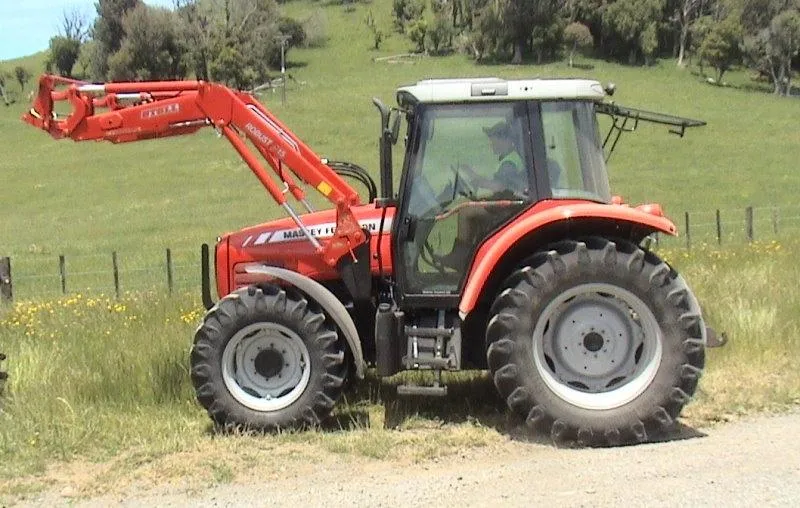
Tractor Skills
Power Take-Off Safety
Unguarded shafts on PTO-driven machinery have caused serious injury and death. PTO shafts, belts, chains and sprockets must be guarded at all times. When not in use, always cover the tractor stub shaft with its guard and shield.
Safe Use of PTO-Driven Implements
Power Take-Off (PTO) allows the tractor’s engine to drive mounted or trailed equipment like mowers, spray pumps or balers. These rotating machines can be extremely dangerous if misused.
Key safety practices:
Turn off the tractor engine before attaching a PTO-driven implement.
Walk around the machine before starting to check for bystanders, especially children.
Check for obstructions in the path of blades or moving parts before engaging the PTO.
Engage PTO only from the tractor seat.
Use low engine speed at start-up, then increase after the PTO is engaged.
Never service or adjust a machine while it is running.
Disengage PTO and stop the machine before leaving the seat.
Follow the manufacturer's recommended speeds. Always consult the operator’s manual.
Many PTO accidents occur close to home, often because equipment is left running unattended during meal breaks.
Avoiding Run-Over Accidents
Tractor run-overs are a leading cause of fatal injury on farms, especially involving young children. The most dangerous areas are farmyards, races and near sheds.
Prevent run-overs by:
Always checking for children and obstacles before moving a machine.
Only operating controls from the tractor seat.
Stopping the engine and applying the handbrake before leaving the seat.
Lowering hydraulic equipment before leaving the tractor, even briefly.
Research has shown that one-third of on-farm deaths between 1949 and 1983 involved children. Between 1986 and 1991, 47 children were killed on New Zealand farms. Many deaths were due to being run over or crushed by machinery.
Never attempt to mount or dismount a moving tractor. Trying to save time this way has resulted in severe injuries and fatalities.
Preventing Tractor Overturns
Many tractor overturns happen on flat ground, often due to excessive speed. Stability is affected by speed, slope, weight, and how the machine is operated.
To reduce the risk of overturns:
Slow down on rough ground and hills.
Avoid sharp turns, especially with trailed implements. A rear wheel catching on the drawbar can cause jack-knifing and tip the tractor.
Carry implements low to maintain a low centre of gravity.
Use a low hitch point to improve traction and reduce the chance of flipping.
Select the right gear before starting a slope. Avoid changing gear mid-slope.
Use the correct gear downhill for adequate engine braking.
Keep front-end loader buckets low, especially on slopes.
Rear-mounted implements can act as stabilisers if they contact the ground before the tractor tips. This small detail can prevent a rollover.
Hydraulic System Safety
Tractor hydraulics are powerful and potentially deadly. Injuries and deaths often occur when people get caught in moving parts or trust the hydraulics to hold heavy equipment.
Key precautions:
Lower all hydraulics to the ground before leaving the seat.
Operate controls only from the tractor seat. Never lean over to operate from the rear.
If you must work under raised equipment, use mechanical supports. Do not rely on hydraulics or locks.
Keep children away from tractors. Hydraulic levers can be activated unintentionally.
Inspect hoses and fittings regularly. Failures are not uncommon.
It may take longer to climb back into the seat to adjust equipment height, but it is the safest position from which to operate.

